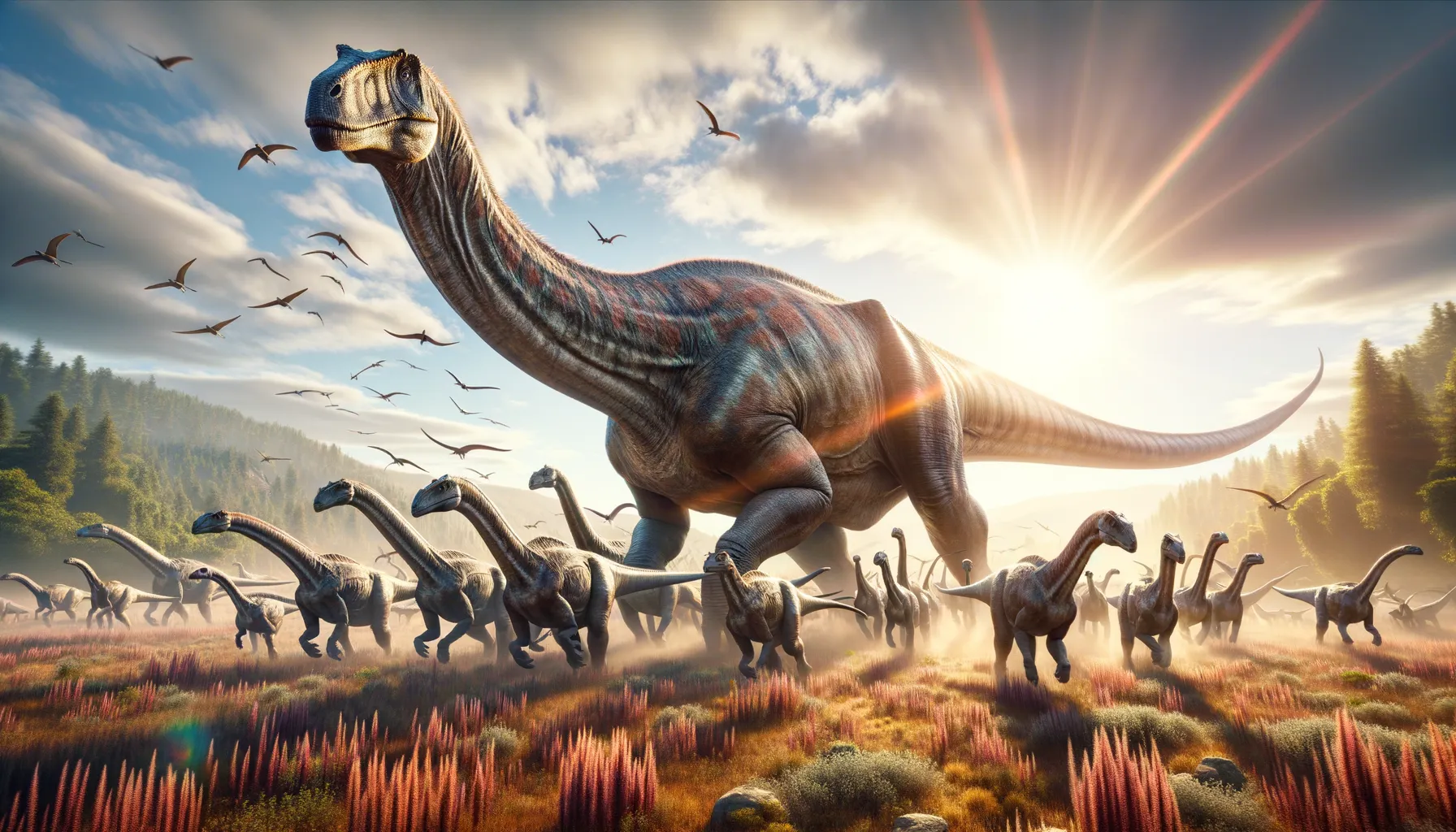
Sauroposeidon
Towering giant of the prehistoric world.
Period
Cretaceous
Length
Measured up to 100 feet in length.
Height
Stood about 50 to 60 feet tall.
Weight
Weighed around 40 to 60 tons.
Sauroposeidon was one of the tallest dinosaurs to have ever walked the Earth. With its extremely long neck and massive size, it was an impressive herbivore of the Early Cretaceous period. Its discovery challenged previous notions of dinosaur size and helped scientists understand the incredible diversity among gigantic sauropods. Despite its size, it likely moved in herds and faced various challenges in its prehistoric environment.
Diet
Sauroposeidon was herbivorous, feeding primarily on high-up foliage which smaller dinosaurs couldn't reach. Its long neck allowed it to access vegetation in the treetops.
Hunting
As a herbivore, Sauroposeidon did not hunt. Instead, it foraged for vegetation and likely consumed large quantities of plant material to sustain its massive body.
Environmental challenges
Sauroposeidon faced challenges such as finding enough food due to its enormous size. It had to constantly move to new areas to graze and prevent overgrazing. Additionally, it needed to stay hydrated, requiring access to large water sources, which might have been scarce during droughts. Predators like large theropods also posed a threat, particularly to juveniles.
Speed
It moved slowly and steadily due to its massive size.
Lifespan
Lived for several decades, similar to other large sauropods.
First discovery
First discovered in Oklahoma, USA, in 1994.
Fun Facts
- Sauroposeidon was one of the tallest dinosaurs, with necks reaching up to 40 feet tall.
- It lived around 110 million years ago during the Cretaceous period.
- Sauroposeidon's name means 'earthquake god lizard'.
- Its fossil remains were discovered in what is now Oklahoma, USA.
- Sauroposeidon belonged to the sauropod group of dinosaurs, known for their long necks and tails.
- It likely fed on high vegetation from tall trees, using its long neck to reach leaves other dinosaurs couldn't.
- Despite its massive size, Sauroposeidon probably weighed around 50 tons, which is lighter than some other sauropods.
Growth and Development
Sauroposeidon likely grew rapidly during its early years to reach a size that reduced the number of predators. It might have hatched from eggs and been self-sufficient shortly after birth. Over time, it developed sturdy limb bones and a massive body, which were essential for carrying its great weight.
Habitat
Sauroposeidon lived in areas with abundant foliage and open landscapes, ideal for grazing. Its habitat would have included forested regions and floodplains, providing access to both water and food. These environments supported large populations of herbivores.
Interaction with other species
This giant sauropod likely coexisted with smaller herbivores and various carnivores. It might have used its size to dominate feeding spots while also being alert to the presence of predators. Social behaviors may have included living in herds for protection.
Natural lifespan
It could naturally live for up to 70 years if it survived early challenges.
Reproduction
It reproduced by laying eggs, possibly in large nesting sites. The young were probably independent soon after hatching and grew quickly to avoid predation. Parental care was likely minimal after laying the eggs.
Social behaviour
Sauroposeidon may have traveled in groups to avoid predation, relying on the herd for protection. Its social structure could have included both adults and juveniles in mixed-age groups.
Fossil locations
Fossils of Sauroposeidon have mainly been found in the southeastern United States, particularly in Oklahoma. These fossil sites have provided important insights into the distribution and ecology of this giant dinosaur species.
